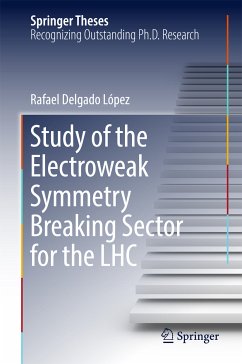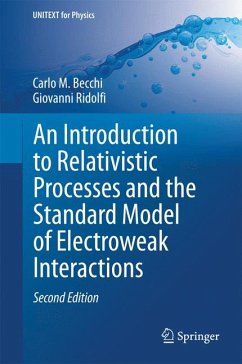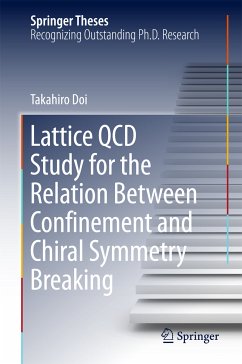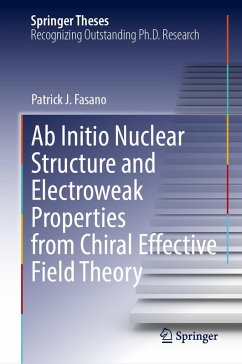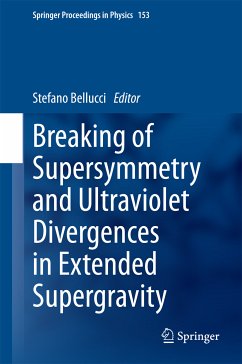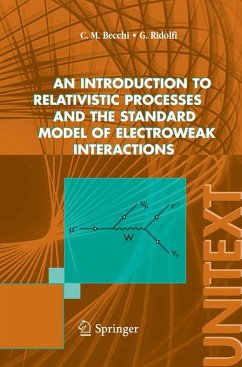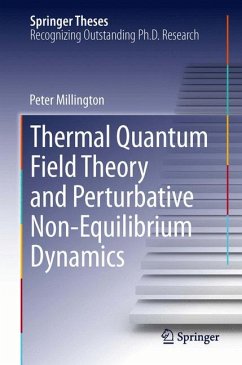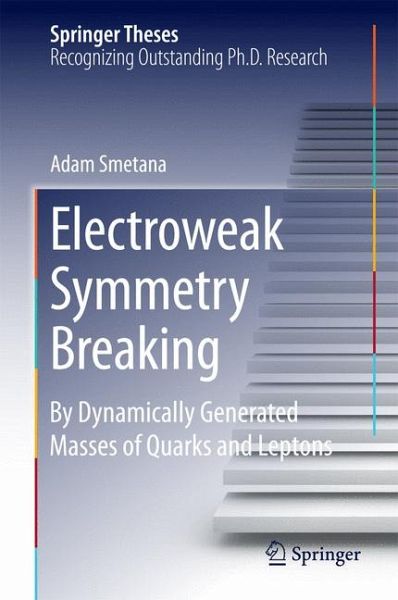
Electroweak Symmetry Breaking (eBook, PDF)
By Dynamically Generated Masses of Quarks and Leptons
Versandkostenfrei!
Sofort per Download lieferbar
72,95 €
inkl. MwSt.
Weitere Ausgaben:

PAYBACK Punkte
36 °P sammeln!
With this thesis the author contributes to the development of a non-mainstream but long-standing approach to electroweak symmetry breaking based on an analogy with superconductivity. Electroweak symmetry breaking is assumed to be caused by dynamically generated masses of typical fermions, i.e., of quarks and leptons, which in turn assumes a new dynamics between quarks and leptons. Primarily it is designed to generate fermion masses and electroweak symmetry breaking is an automatic consequence.After the summary of the topic, the first main part of the thesis addresses the question as to whether...
With this thesis the author contributes to the development of a non-mainstream but long-standing approach to electroweak symmetry breaking based on an analogy with superconductivity. Electroweak symmetry breaking is assumed to be caused by dynamically generated masses of typical fermions, i.e., of quarks and leptons, which in turn assumes a new dynamics between quarks and leptons. Primarily it is designed to generate fermion masses and electroweak symmetry breaking is an automatic consequence.
After the summary of the topic, the first main part of the thesis addresses the question as to whether the masses of known quarks and leptons provide sufficiently strong sources of electroweak symmetry breaking. It is demonstrated that neutrino masses subject to the seesaw mechanism are indispensable ingredients. The other two parts of the thesis are dedicated to the presentation of two particular models: The first model is based on the new strong Yukawa dynamics and serves as a platform for studying the ability to reproduce fermion masses. The second, more realistic model introduces a flavor gauge dynamics and its phenomenological consequences are studied.
Even though, in the past, this type of models has already been of some interest, following the discovery of the Standard-Model-like Higgs particle, it is regaining its relevance.
After the summary of the topic, the first main part of the thesis addresses the question as to whether the masses of known quarks and leptons provide sufficiently strong sources of electroweak symmetry breaking. It is demonstrated that neutrino masses subject to the seesaw mechanism are indispensable ingredients. The other two parts of the thesis are dedicated to the presentation of two particular models: The first model is based on the new strong Yukawa dynamics and serves as a platform for studying the ability to reproduce fermion masses. The second, more realistic model introduces a flavor gauge dynamics and its phenomenological consequences are studied.
Even though, in the past, this type of models has already been of some interest, following the discovery of the Standard-Model-like Higgs particle, it is regaining its relevance.
Dieser Download kann aus rechtlichen Gründen nur mit Rechnungsadresse in A, B, BG, CY, CZ, D, DK, EW, E, FIN, F, GR, HR, H, IRL, I, LT, L, LR, M, NL, PL, P, R, S, SLO, SK ausgeliefert werden.




